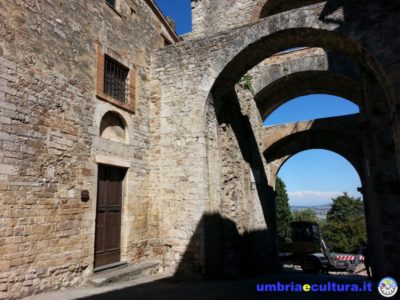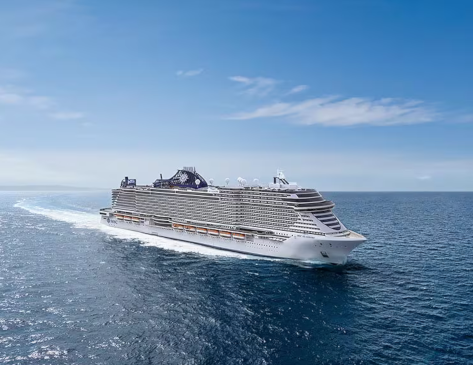At the end of Borgo Nuovo di Todi, leaning against the medieval walls, right at the entrance of Porta Perugina (originally called Porta di San Biagio), stands the ancient church of Sant ‘Eligio, already present in documents of 1269 and probably build by Leoni family.
From 1500 the church of Sant’Eligio was the seat of the Lay Brotherhood of Mercy, a pious work dedicated to providing dowry for poor girls otherwise destined to remain spinsters. The church, formerly dedicated to the Holy Cross, at that time was dedicated to St. Michael the Archangel, in homage to Bishop Angelo Cesi, and expansion works were carried out on the previous building, the external walls of the church that “lean” are in fact visible at the gateway to the city.
The tradition of building churches near the entrance gates of fortified cities was, in the past, very common, it was a sort of “double defense”: the walls protected the citizens from attacks by enemies, the churches from evil forces.
With the new war technologies, in the 16th century, the circular bastion was built along the walls. This construction allowed to better dodge the bullets of firearms and at the same time to host heavy artillery on its top, time after time the defense requirements declined, the bastion became a sacristy, being adjacent to the church.
The interior, with a single nave, features a cycle of frescoes with scenes from the life of the Madonna, made, in part, by Domenico Spoldi. Note the box depicting Bishop Cesi in the act of distributing bags of money to poor girls.
From the departure of the Confraternity in the 17th century, the church of Sant’ Eligio experienced a period of abandonment, until 1776 when it became the seat of the guild of blacksmiths.
On the altar stands a painting of 1777 depicting Saints Michael the Archangel and Eligio of Noyon, patron of the blacksmiths, depicted with his prerogatives: the golden crown and the anvil. A number of miracles were attributed to Sant’Eligio, a goldsmith and French blacksmith who lived in the 7th century AD, including that of shoeing a particularly restless horse that no farrier was able to shoe: legend has it that the saint detached his legs, he ironed them and reattached them to the beast.
In the sacristy / bastion there is also a fresco depicting Saint Lucia, Saint to whom the blacksmiths were very devoted, because they are frequently exposed to eye accidents.
From a staircase adjacent to the church, made of bricks, poetic for its precarious conditions but made accessible by wooden treads, it is possible to access the top of the bastion. From this exclusive and privileged position it is possible to admire up close the small sailing bell tower with three bells, the Guelph merlons of the walls with their slits, while the gaze opens onto the surrounding valley and an absolutely unseen glimpse of Todi.
Benedetta Tintillini
Find the Sant’Eligio church on Google Maps:



